Investigating history
Expanded Winnipeg Police Museum a force to be reckoned with at downtown headquarters
Advertisement
Read this article for free:
or
Already have an account? Log in here »
To continue reading, please subscribe:
Monthly Digital Subscription
$19 $0 for the first 4 weeks*
- Enjoy unlimited reading on winnipegfreepress.com
- Read the E-Edition, our digital replica newspaper
- Access News Break, our award-winning app
- Play interactive puzzles
*No charge for 4 weeks then billed as $19 every four weeks (new subscribers and qualified returning subscribers only). Cancel anytime.
Read unlimited articles for free today:
or
Already have an account? Log in here »
Hey there, time traveller!
This article was published 21/02/2018 (2266 days ago), so information in it may no longer be current.
It’s one part of former police officer Jack Templeman’s job he never got tired of: locking people up.
So, when visitors enter the Winnipeg Police Museum, Templeman is only too happy to usher them inside the E Division cell (formerly located at Magnus Avenue and Charles Street from 1911 to 1966) and close the door.
Twenty-five years to life for a mom and two smiley kids, while dad crouches outside and takes their picture through the bars.
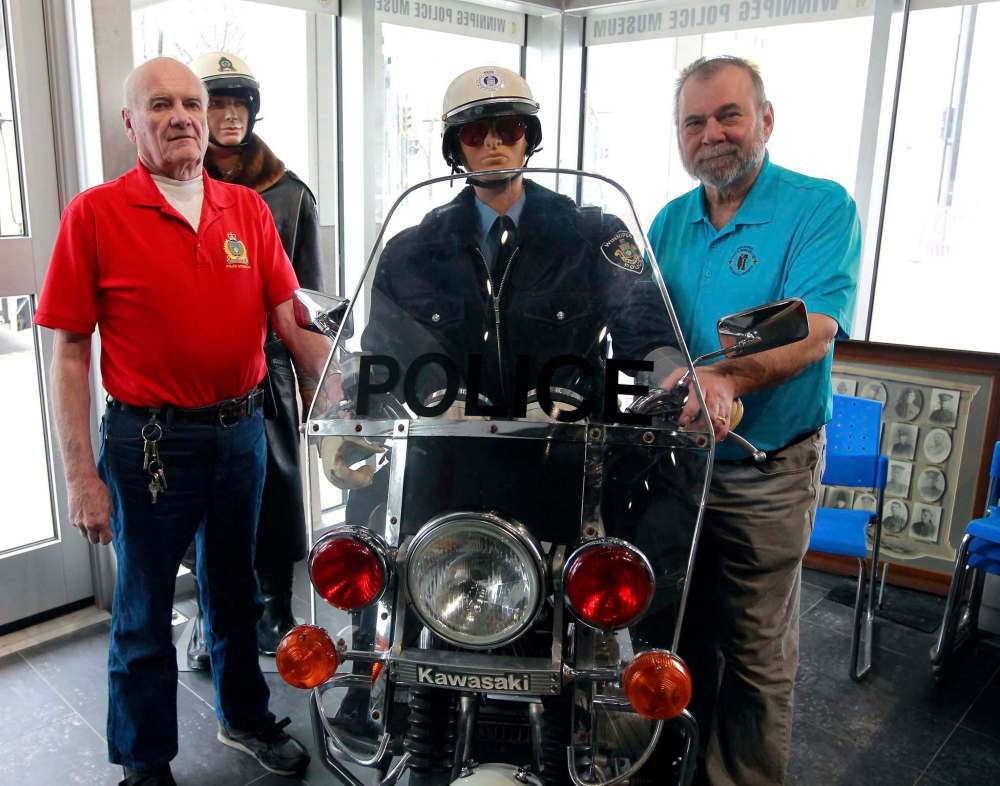
The Winnipeg Police Museum, which is free to the public, has come out of hiding. It’s gone from a tiny, relatively anonymous neighbourhood museum in Westwood, to a bustling destination site on the main floor of the new Winnipeg Police Service headquarters downtown.
“Back at the old site, we would get maybe 400 to 500 visitors per year,” said Randy James, who took over as curator this past year. “In our first year here (at the police building at 245 Smith St., which opened in the summer of 2016), we got 9,400.”
In size, the museum has gone to 5,600 square feet from 1,500 sq. ft. The museum has the collection to support that kind of interest, even if it is still working on improving the signage.
Walk in and learn about the former Winnipeg police officer who became a movie star. Victor McLaglen spent three months on the local force in 1907, before he learned he could make more money in one night of boxing than in a year as a police officer.
He eventually gravitated to Hollywood and starred as John Wayne’s sidekick in several films. In 1935, his role in The Informer won him an Oscar for best actor.
“We believe we’re the only police agency in North America ever to have had an Academy Award-winning cop,” James said.
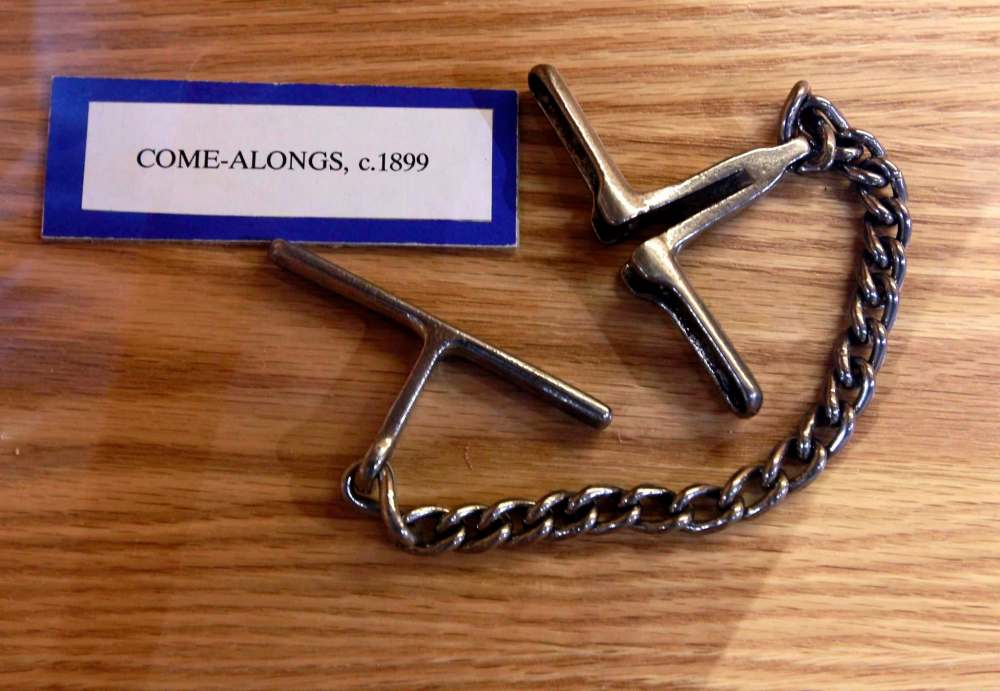
The museum delves into how policing has changed over the years. For example, it illustrates changes in female police officer attire: starting with pillbox hats; then, stylish bowlers; then, oddly, a stewardess design; and finally, adopting the forage cap (the same as men), with its hard peak.
Male police officers started off with English-style bobby helmets, but in the 1950s changed to the forage style seen today. Standards have relaxed even more in recent times, with officers now allowed to wear a tuque in winter and a baseball cap in summer (much to the chagrin of old-school cops such as Templeman).
The equipment carried by male officers in the 1950s and ’60s was nothing like now: just a handgun, handcuffs and a baton. “Today, they’re completely loaded with stuff,” said Templeman, who was the museum curator for two decades and still volunteers there regularly.
As for batons, Winnipeg Symphony Orchestra maestro Alexander Mickelthwate probably wishes he had some of these to keep the orchestra pit in check. A display case shows the evolution police batons have gone through, from a two-foot-long wooden club in the early 1900s, to a nine-inch leather “blackjack.” The leather is just decorative, concealing a lead bar inside, or sometimes lead pellets.
Modern batons are short and black, and extend into a shiny steel bar with the flick of the wrist.
The first female Winnipeg police officers came aboard in 1916, but they had limited roles as matrons who looked after wayward children and women in distress. Female officers first hit the street to a limited extent in the 1940s, but were armed only with a baton.
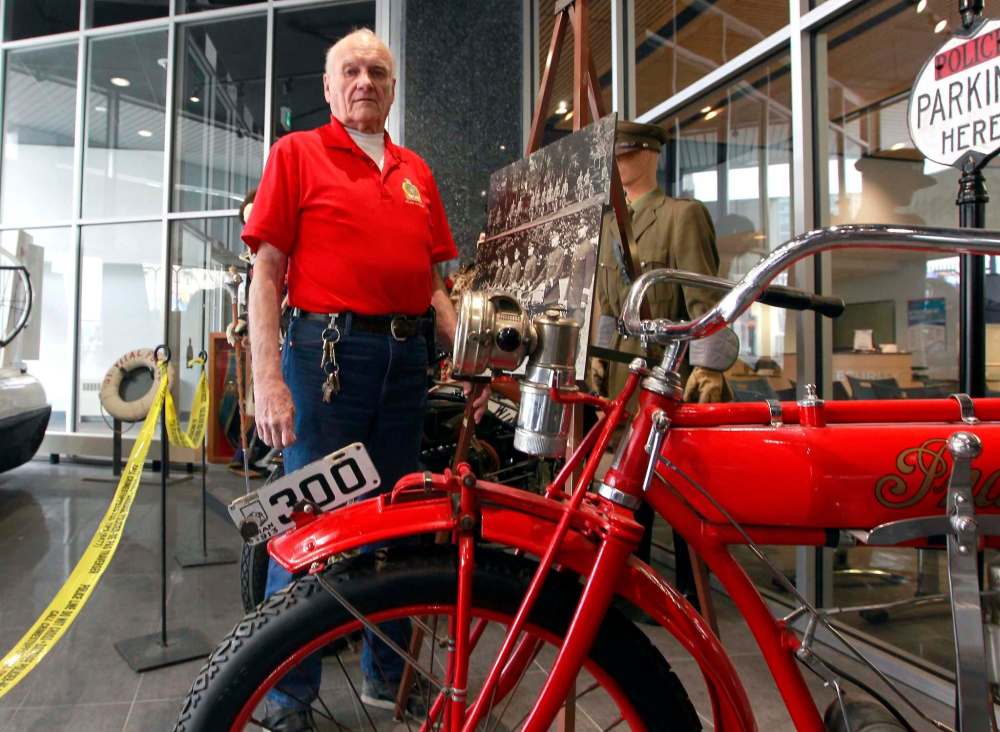
An early skirted police uniform is on display, but it was mostly ceremonial, “because you can’t chase people wearing a skirt,” Templeman said. Women were issued firearms and assumed full constable duties in 1974.
Today, women make up some 220 of the 1,421 WPS officers.
Changing fashion is also on display in the portraits of former police chiefs. They all had bushy moustaches until the mid-1940s, and have been clean-shaven since (with the exception of caterpillar-lipped Herb Stephen, who held the post from 1984 to 1991).
There is also a painting of German shepherd Axel, famous for being the only dog given the Canadian Banks’ Law Enforcement Award.
In 1975, the police dog intervened while a bank robber was shooting at a Winnipeg officer. Axel attacked and, as the thief raised his arm in defence, the dog went for his arm. The thief accidentally fired the gun, fatally shooting himself in the head. There is no evidence that was the intent, but they say Axel was a pretty smart dog.
One display shows the evolution of patrol car siren lights, or cherries. Police cars started with “a single-bubble red light,” Templeman explained, “then went to a double-bubble — two red lights — then, to red and blue lights, then went to two plastic bars, and then, to LEDs, small bar lights you hardly notice, but they give a great light.”
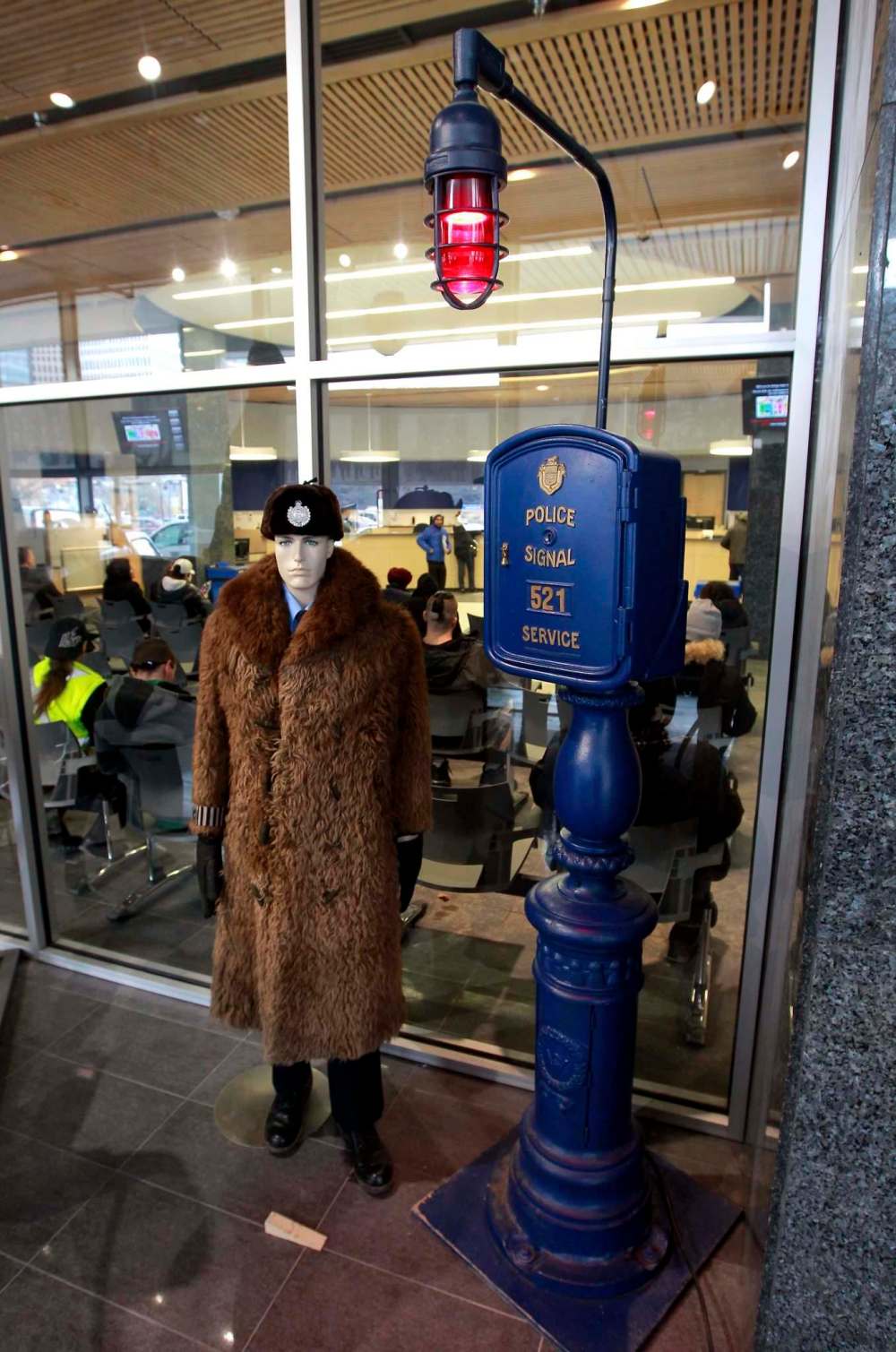
Handcuffs have also undergone a metamorphosis over the past century, including the one-handed cuff, called a nipper. An officer would snap it around a crook’s wrist and then hold onto the attached handle. There were also cuffs that held a suspect’s two thumbs together. The cuffs had serrated edges on the inside, in case the offender tried to do any twiddling.
There is a display devoted to “old-time” cops Jack Taylor and Peter Vander Graaf, who famously didn’t take any guff from criminals.
“If they picked you up, you didn’t know if you were going to the police station or the hospital,” Templeman said.
And don’t get Templeman started on traffic patrol motorcycles with sidecars, such as the vintage models on display at the museum. They were used until 1982, in summer and winter.
“I rode 15 winters with sidecars. You rode until it was 29 below (Fahrenheit). This would have been a riding day, even with this stupid wind (it was -15 C with winds gusting to 50 km/h),” he said.
James said the displays preserve police history, but also act as a conduit between the force and the public.
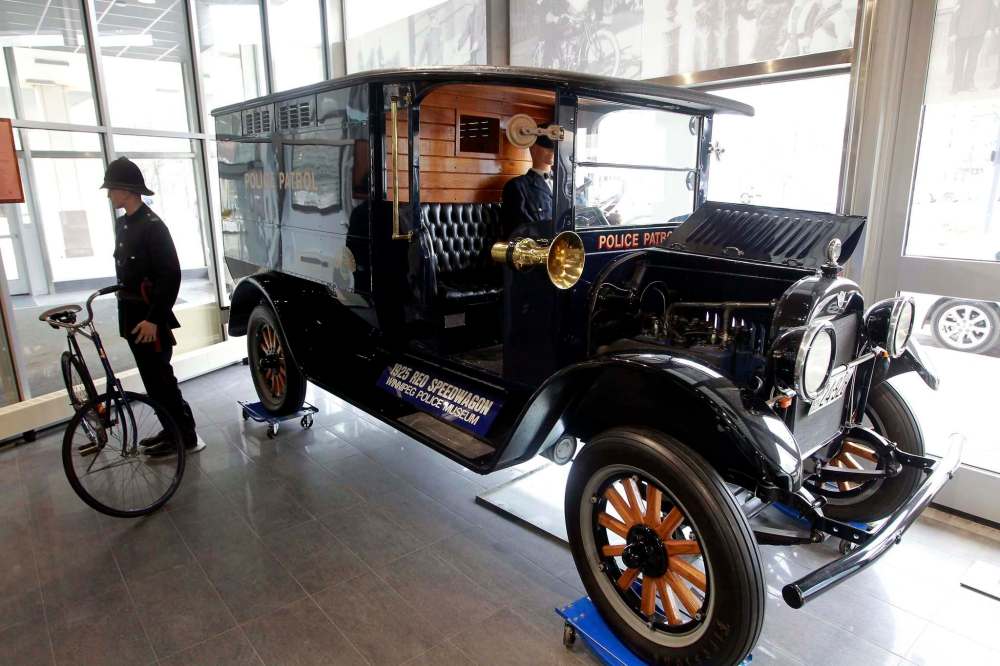
“I see the police museum as a bridging to the community, as well as educating the new generation. It serves a step further than community relations,” he said.
The museum is open from 10 a.m. to 3 p.m., Tuesday through Friday.
bill.redekop@freepress.mb.ca
History
Updated on Thursday, February 22, 2018 9:30 AM CST: Corrects reference to Charles Street


